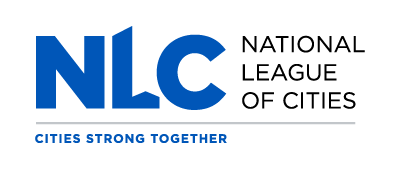The AI Interview: Brittney Kohler, Legislative Director, Transportation and Infrastructure Services, NLC
NLC executive discusses disasters, infrastructure policy and funding opportunities
 American Infrastructure: What goals does the National League of Cities (NLC) have for transportation and infrastructure in the short term and long term?
American Infrastructure: What goals does the National League of Cities (NLC) have for transportation and infrastructure in the short term and long term?
Brittney Kohler: Right now, America’s cities, towns and villages are quite busy putting their top projects forward for the federal infrastructure funding that is flowing from the Infrastructure Investment and Jobs Act (IIJA). Local governments have been sorting through hundreds of federal programs and thousands more of their infrastructure projects that need to be matched up, applied to, won and then started. This September, NLC released a new Rebuilding American map and dashboard showing local communities that are leading on an impressive slate of 1,647 IIJA infrastructure-supported projects across the country, which is amazing given that local governments were barely able to access federal funds directly before the IIJA.
With grant announcements still coming out regularly, NLC looks forward to the Rebuilding dashboard showing continued local leadership in modernizing our nation’s infrastructure in every state. In the longer term, local governments will be working to keep momentum behind each of their infrastructure projects so they can bring the benefits of reimagined and rebuilt infrastructure to their communities. Every infrastructure project can be a win for their community, and we look forward to hearing how these investments are paying off in real benefits to our neighbors.
AI: Disasters are becoming more and more prevalent, and their effects are taking a toll on our infrastructure. What can be done about this?
BK: The frequency of disasters is undeniable, but how we deal with this reality is up to all of us. City leaders have turned to resilience strategies – hardening infrastructure, and updating building codes and standards, like ASCE 7-22 so that our infrastructure and communities can hold up better when the next disaster strikes. However, resilience work takes funding and innovation which is why NLC was glad to see that new IIJA programs like PROTECT transportation grants are going to help cities and states ramp up these efforts. Congress has also passed bipartisan legislation at NLC’s urging to allow for the State and Local Fiscal Recovery Fund uses to also include eligible uses for disaster, transportation and community development block grant uses which are funds in hand now for communities to utilize for resilience and recovery.
AI: As the year-end approaches, what do you want policymakers to know moving forward?
BK: Congress is once again facing a federal government shutdown this fall. The Senate made a bipartisan effort to put forward budget appropriations in the normal order which certainly is a sign of progress, but without Congressional action in the House, funding and programs for airports, disaster aid and much more are hanging in the balance and federal departments are preparing to shut down. Unfortunately, government shutdowns remain wasteful exercises, eroding confidence in the United States government and costing the public more without reaching meaningful budget reform. NLC urges Congress to take an orderly approach to budgeting so that states and localities can anticipate any major shifts in federal aid and make reasonable adjustments to their budgets, rather than subjecting localities to surprise declines in domestic federal aid after the new fiscal year has already begun. At the time of writing, Members of the House still need to hear from constituents why reaching a budget deal is necessary even if they would like to reduce federal spending overall.
The frequency of disasters is undeniable, but how we deal with this reality is up to all of us.”
AI: Can you speak to the implementation of technology in transportation infrastructure?
BK: Technology has fully seeped into transportation projects, and NLC continues to hear from cities and towns about the rise of new timely and transformative technology solutions being brought into projects. The role of sensors alone in solving transportation needs on roads, rail and transit is incredibly helpful, and the future of AI in transportation is bright as we see ways to harness these new tools for good.
NLC is also cheering on the latest winners of the Strengthening Mobility and Revolutionizing Transportation (SMART) grant program while encouraging even more cities, towns and villages to jump into these grants together with teams of cities, their metropolitan planning organizations, transit agencies and toll authorities. The SMART program was established to provide grants to eligible public sector agencies to conduct demonstration projects focused on advanced smart community technologies and systems to improve transportation efficiency and safety which will be powerful signals for further project integrations moving forward.
AI: What’s next for the NLC? Any new policies, programs, or initiatives?
BK: Local governments are pushing hard to make our communities safer by addressing the safety of our roads and railroads that cut through our communities. NLC’s Safety First Challenge for Safer Streets is continuing as more cities, towns and villages put their hand up for Safe Streets and Roads for All grants that give flexible funds to communities of every size and budget to collaborate and fix transportation problems locally. NLC is asking every community to consider applying for these transformative, local-only planning grants because they are practical and meant to make communities safer quickly.
NLC is also continuing to support the Railway Safety Act (S.576/H.R.1647), bipartisan legislation to strengthen rail safety across the country, this fall. After a tragic derailment of hazardous chemicals in East Palestine, Ohio, earlier this year, rail safety became national news, but for many communities, rail issues were already the talk of the town. Every day in the U.S., an average of three trains derail with as many as half potentially carrying hazardous substances. NLC’s Rail Safety interactive map allows you to easily see the frequency of derailments in your area. The Senate hopes to vote on this legislation soon, and House leaders have requested Committee action on rail safety.
AI: Is there anything else you would like to add?
BK: Infrastructure is in the national spotlight, and both the public sector and private industry infrastructure leaders are stepping up to do more during this historic rebuilding sprint. NLC hopes to continue to encourage greater collaboration and partnership to rebuild the great infrastructure that benefits communities, and we welcome your insights into what can support successful projects nationally as we dig in during the IIJA’s continued infrastructure rollout.


